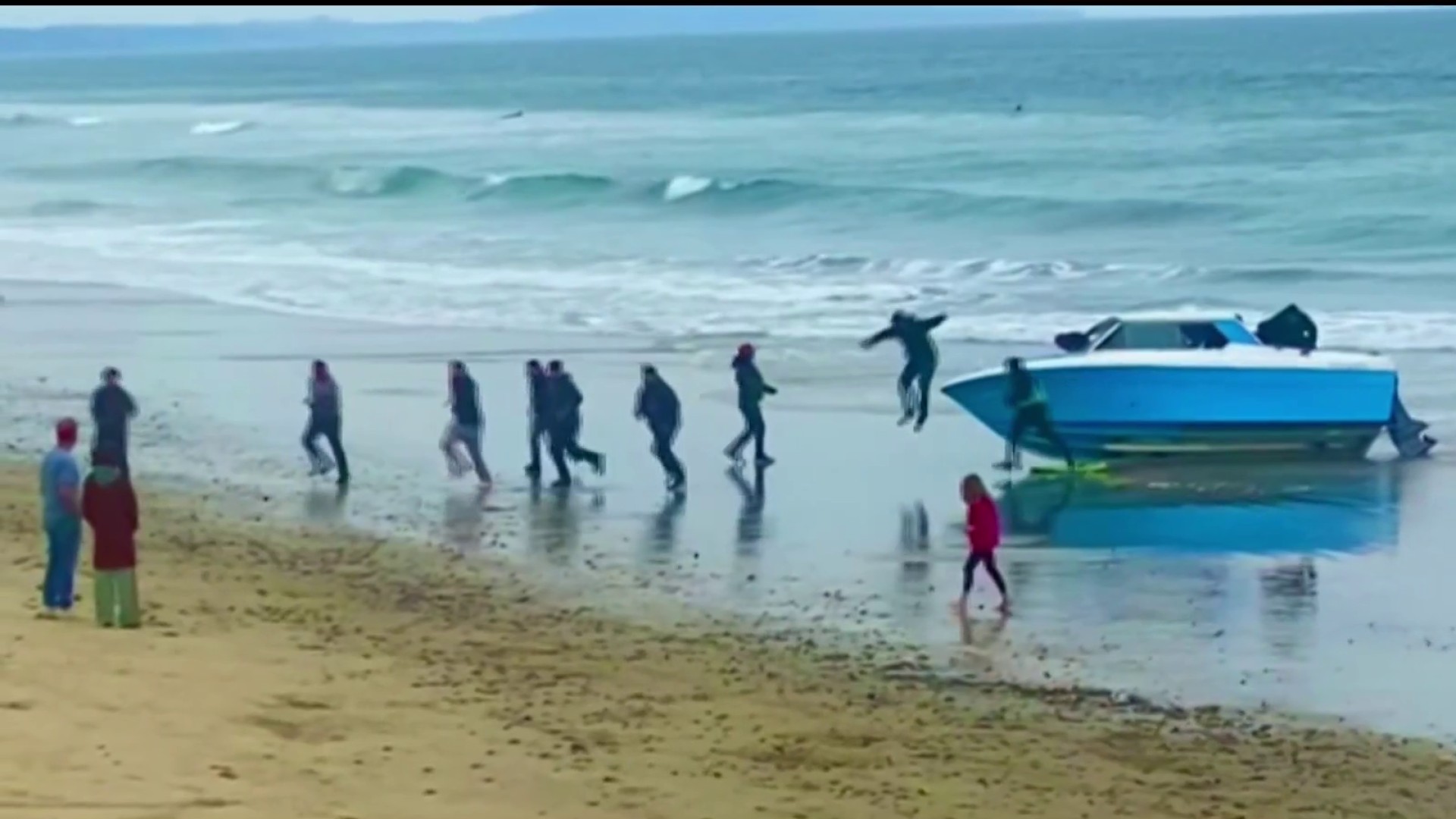"Today, with the sun out, the seals are out feeding," said John Steel, a retired La Jolla physician, as he prepared for a wetsuited noon-hour swim-and-snorkel outing in the waters off La Jolla's Children's Pool beach.
"Some [seals] will swim with us as we go around," Steel said. "It's a good way to interact with the seals."
Explained Steel's buddy Don Perry: "If the beach is completely covered with seals, we usually go someplace else. We go around them if they're on one side of the beach. We're careful not to do anything that's illegal."
Steel and Perry, both familiar with the litigious and legislative furor over the future of Children's Pool, say they're just using their legally entitled access to the now-embattled cove created by Ellen Browning Scripps in 1931.
"She did have an agreement," Perry explains. "And the agreement was: It would be in the trust that was created, that it would forever be a children's pool."
But San Diego City Attorney Jan Goldsmith said Ms. Scripps never owned the beach -- that the long-held belief that she had granted it to the citizens and their children is a misconception.
"The beach is owned by the state of California, and it is the state that transferred the beach to the city in trust," Goldsmith wrote in a legal memorandum issued Tuesday to Mayor Jerry Sanders and the City Council.
"Ms. Scripps asked and received permission of the state to build [the seawall that protects the beach]," reads Goldsmith's memo. "She was thanked, as she and her family should be today ... but she did not ask for an agreement,and there was none."
Now, as Goldsmith noted, "with limited exceptions, federal law prohibits removal of the seals."
Goldsmith's memo follows in the wake of a bizarre flurry of activity in the courts and legislature, featuring the views of U.S. District and state Superior Court judges as to whether the beach must be dredged and cleansed of fecal contamination despite the seals' presence.
Also mulled by the courts: whether the seals may be removed by amplifying the noise of dogs barking, allowing dogs to herd the seals into the water or using water-spray devices.
While it has been made clear that the beach won't be "going to the dogs," the issue seems to reflect the most divisive aspects of the legal warfare over the cross atop Mount Soledad.
"I walk by [the Children's Pool] almost every day," said La Jolla resident Julie Prause. "And [the seals are] one of the things that bring a lot of people to the area. So let's take into account the recession, the economy."
In the Court of Public Opinion, beachgoing tourists overwhelmingly support the idea of leaving the seals alone.
"This is their habitat," said Amanda Lund, visiting from Mount Pleasant, Utah, and keeping her eye on her son frolicking in the waves off a small beach around the bend from the Children's Pool seawall. "They should be free to roam where they can. This is their life."
And what might be Ms. Scripps' thoughts on the issue, were she alive today?
The seals' defenders take their cues from her early support for the San Diego Zoo and Scripps Institution of Oceanography.
Local
"So I really think she would enjoy having all sorts of marine life here," said Brooke Haggerty, an activist with the Save the Seals Protection League, who was near her information stand on the sidewalk overlooking Children's Pool.
"Not only the seals, but we can see the dolphins and whales when they migrate, the birds and squirrels," Haggerty added. "I really think she would enjoy this spot."
According to Steel and Perry, court testimony indicates that the seal colony originated from dozens that were rescued, rehabilitated and returned to the wild by SeaWorld in the mid-1990s following creation of an underwater reserve east of Children's Pool.
Previously, they said, SeaWorld had released seals off Point Loma.



